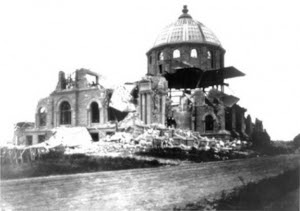In 1906, an earthquake in San Andreas Fault giant carved a trench through Portola Valley, now a small village of homes of millions of dollars hidden in the hills above Stanford, California.
More than a century later, geologists believe they have demonstrated the San Andreas Fault western plow ridges along the valley, ending decades of debate provoked by a historical map poorly reproduced.
"I really do not understand why you can not have this level of confusion as to what happened in the great earthquake right near here took place at Stanford University," said Ted Sayre, the Portola Valley Town is a consultant geologist Company Cotton, Shires & Associates Inc. "It should have been a good record of what actually happened."
History of high technology
To finally settle the debate-west-facing east, Chester Wrucke, former U.S. Geological Survey geologist, and his son Robert Wrucke, unearthed the Stanford map and photographs of the initial earthquake. Chester Wrucke lives in Portola Valley, not far from where the San Andreas fault, recently found crosses Alpine Road location. Working with the city geologist Sayre, the trio of detectives compared the 1,906 photos publicly available bare earth lidar images of the valley, following the historical ruptures in modern surveying. Bare-earth lidar is an airborne laser measurement technique resulting in fine detailed topography, free of trees and shrubs.
Research confirms that only the western fault chain broke in the 1906 earthquake, and verifies its location, Sayre said. The results were published August 1 in the Bulletin of the Seismological Society of America.
Although both the western and eastern branches of the San Andreas Fault is considered active in Portola Valley, as defined by California state law, the exact location of the recently broken chain is vital to avoid new construction in the top of failure, Sayre said. Alquist-Priolo Act of California prohibits construction of structures for human occupation in the top of active faults.
"Our main concern is another break in the trace 1906," Sayre said.
By Live Science
